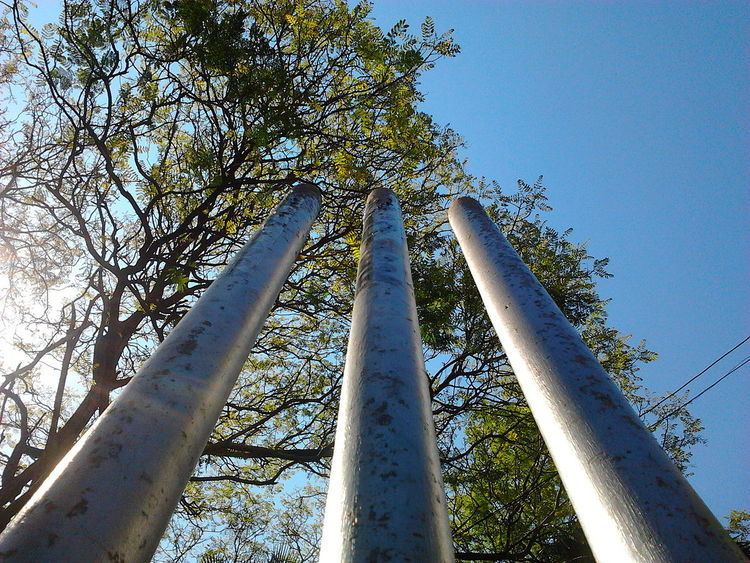 | ||
Similar Cricket ball, Cricket Ball Manufacturing Process, Cricket Bat Manufacturing Process, Cricket clothing and equipment, Cricket bat | ||
In cricket, the stumps are the three vertical posts that support the "bails" and form the wicket. Stumping or being stumped is a method of dismissing a batsman.
Contents
The umpire calling stumps means the play is over for the day.
Part of the wicket
The stumps are three vertical posts which support two bails. The stumps and bails are usually made of wood, most commonly ash, and together form a wicket at each end of the pitch.
The overall width of each wicket is 9 inches (22.9 cm). Each stump is 28 inches (71.1 cm) tall with maximum and minimum diameters of 1 1⁄2 inches (3.81 cm) and 1 3⁄8 inches (3.49 cm). They have a spike at one end for inserting into the ground, and the other end has a U-shaped 'through groove' to provide a resting place for the bails. In junior cricket the items have lesser dimensions.
Each stump is referred to by a specific name:
These names are relative to the batsman, so a right-handed batsman's leg stump becomes the off stump when a left-handed player is batting.
In modern professional play, the stumps are often branded with a sponsor's logo. Although they are too far away from spectators to be seen, such logos are visible on television coverage.
For professional matches, often one or more of the stumps is hollow and contains a small television camera. This is aligned vertically, but can view through a small window on the side of the stump via a mirror. The so-called stump-cam gives a unique view of play for action replays, particularly when a batsman is bowled.
A new innovation are stumps and bails embedded with red LEDs, which flash when they are completely dislodged. Invented by an Australian engineer and trademarked as "Zing Bails", they were designed to aid both umpires with run-out or stumping decisions as well as provide distinctive images to television coverage during day-night matches. LED stumps were first used at the 2014 ICC World Twenty20, and have since become commonplace in major white-ball matches like ODIs or franchise T20 leagues.
End of the day's play
Stumps is also used as a term to mean the end of a day's play, e.g. "The umpires called stumps" means that the umpires have declared play over for the day. At the end of a session, i.e. before lunch or tea, the umpires will remove the bails; at the end of the day's play, the umpires will also remove the stumps.
